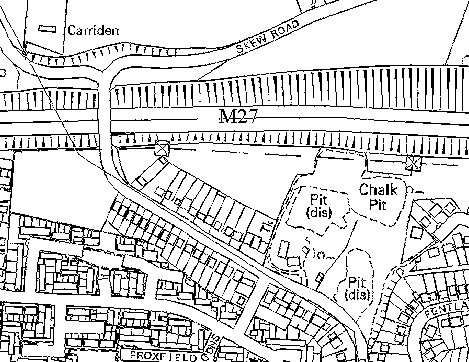|
A investigation took place which showed
that the Chalk Pit had been used by the Royal Marines on 24 occasions in
the past 12 months, the RMSA on 4, and the Fort Southwick Military Unit
once. It was also revealed that the same area had been used by the Home
Guard, but the exact nature of the use and the number of occasions had not
been recorded. Prior to August 1944 many and various Military Units had
used the Quarry for operational training.
The matter eventually reached the peacetime
High Court in late 1948, when the case rested on the meaning of the
wording on the 'Danger Notices' displayed at the three entrances in to the
Chalk Pit. It transpired that in 'Class A Orders' three different forms of
wording could be used on such notices. Things were further complicated by
the fact that a 'Right of Way' over a footpath through the Quarry existed
pre-war, and had not been deleted in accordance with the Defence
Regulations of 1940.
It could not be established exactly which
Military Unit should have recovered the Grenade, nor could it be said that
the boys had been trespassing as the wording on the notices - actually the
third form of notice - was considered to be ambiguous.
The boys were assessed by the National
Assistance Board on behalf of the High Court as to the full extent of
their wounds during June 1948. Both of them were considered - by the
criteria of the time - to be 80% permanently disabled, and that they could
not be expected ever to be able to gain employment. The nature of the
final Court Judgment is unknown.
|



